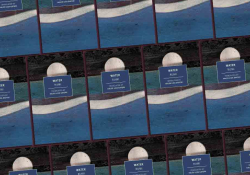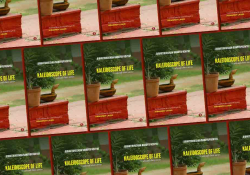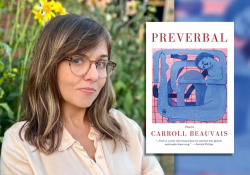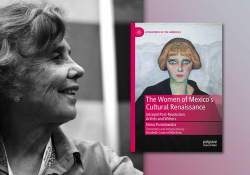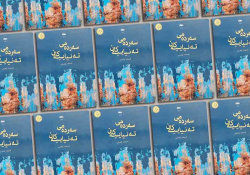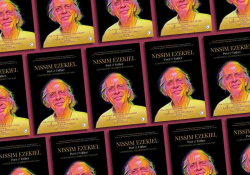Eros and Saudade: Languages of Love in the Poetry of Rudencio Morais
 The cover of Rudencio Morais’s collection of prose poems, Os dialetos do Amor (filLetras Editora, 2018; The languages of love), features a woman contemplating a brilliant red dawn over the Indian Ocean. The image suggests the eternal rebirth of day and of love, which is one of the primary themes in the poems. Beginning with “A dor” (The pain), Morais evokes the Portuguese artistic tradition of saudade, or melancholy, which is a combination of reflection, nostalgia, and loss—always with a concept of the ideal in mind. The tradition of saudade can be traced back as far as the troubadour poets of the medieval Iberian peninsula, whose lyrics and songs blended cultural traditions. Strongly influenced by chivalric literature, they created the notion of the infinite, ongoing quest for connectedness with the object that represented the embodiment of the unattainable ideal.
The cover of Rudencio Morais’s collection of prose poems, Os dialetos do Amor (filLetras Editora, 2018; The languages of love), features a woman contemplating a brilliant red dawn over the Indian Ocean. The image suggests the eternal rebirth of day and of love, which is one of the primary themes in the poems. Beginning with “A dor” (The pain), Morais evokes the Portuguese artistic tradition of saudade, or melancholy, which is a combination of reflection, nostalgia, and loss—always with a concept of the ideal in mind. The tradition of saudade can be traced back as far as the troubadour poets of the medieval Iberian peninsula, whose lyrics and songs blended cultural traditions. Strongly influenced by chivalric literature, they created the notion of the infinite, ongoing quest for connectedness with the object that represented the embodiment of the unattainable ideal.
Morais adds a self-aware, philosophical element. In “Saudades” (Melancholies), he emphasizes self-reflection: “Caminho nesta rua chamada tempo” (I walk along this road called time), and in the journey, he recalls sadnesses and also vertiginous flights of love and loss. What makes the poem poignant is not only the nostalgia but also the recognition that language itself is inadequate to express the journey. In this poem, as in others, the language is that of sheer corporeality, of bodies that must be pushed to exhaustion to find meaning.
The bodies of expression are not just human bodies but also the body of the book, the blank white paper representing new beginnings, and the possibility of finding the perfect language to express a feeling and a concept. In “O meu querer” (loosely translated as “My desire”), “Queria caminhar sobre a brancura do papel, adormecer nele essa poesia amorosa” (I wanted to walk over the whiteness of the paper, sleep within this love poetry), the page and the message itself becomes the body. With the body (the paper, the book), the constructed artifact has the ability to shout, express, and explain existence itself in the “nudez da vida” (nakedness of life).
The languages of love are, as in the Renaissance poets, more than anything a philosophy of being and becoming. The poet’s prime endeavor is to find the words that point to states of disequilibrium, then find the words to restore the balance, order, and sense of wholeness. In “Os dialetos do fome” (The languages of hunger), Morais reflects upon the physicality of harvests, food preparation, mortar and pestle, and in anticipating the satisfaction of hunger, he constructs a tension between oppositions. Hunger vs. satiety is the principal opposition, but later he explores the tension between surface appearances and what lies hidden beneath.
The poems in Os dialetos do Amor represent a concept of emotions, bodies, and words themselves always in motion, transforming themselves, and asking the reader to consider what he or she sees in their reflective surfaces. Morais, trained as a geologist, works with the materiality of the world. And, as all geologists are trained to do, he views both observed and constructed phenomena as having multiple interpretive possibilities.
University of Oklahoma



